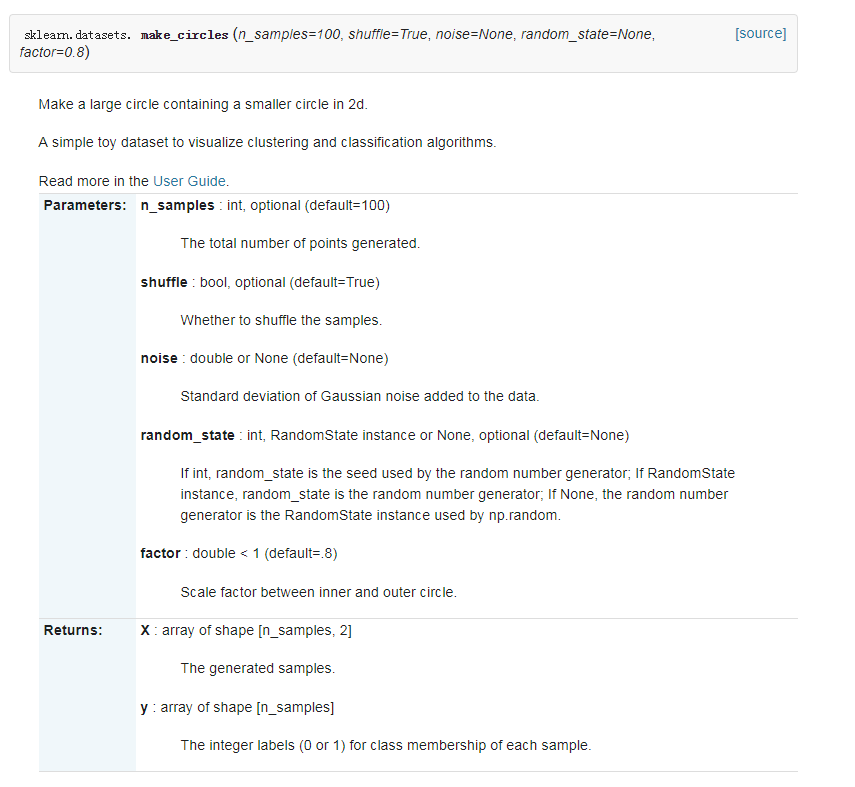(1)数据集生成
data, features = make_circles(n_samples=N, shuffle=True, noise= 0.12, factor=0.4)

(2)模型结构
这里面的变量除了存放原始数据,还有一个列表,用来存放为每个测试数据预测的测试结果
(3)损失函数描述
在聚类问题中,我们使用的距离描述跟前面一样,都是欧几里得距离,在每一个聚类的循环中,计算测试点与每个存在的训练点之间的距离,找到最接近那个训练点的索引,使用该索引寻找最近邻的点的类
distances = tf.reduce_sum(tf.square(tf.subtract(i , tr_data)),reduction_indices=1) neighbor = tf.arg_min(distances,0)
(4)停止条件
本例中,当处理完测试集中所有的样本后,整个过程结束
import tensorflow as tf
import numpy as np
import time
import matplotlib
import matplotlib.pyplot as plt
from sklearn.datasets.samples_generator import make_circles
N=210 #数量
K=2 #簇
# Maximum number of iterations, if the conditions are not met
MAX_ITERS = 1000 #最大迭代次数
cut=int(N*0.7) #把数据集分割为30% 70%
start = time.time()
data, features = make_circles(n_samples=N, shuffle=True, noise= 0.12, factor=0.4) #生成数据集
tr_data, tr_features= data[:cut], features[:cut] #70%
te_data,te_features=data[cut:], features[cut:] #30%
fig, ax = plt.subplots()
ax.scatter(tr_data.transpose()[0], tr_data.transpose()[1], marker = 'o', s = 100, c = tr_features, cmap=plt.cm.coolwarm )
plt.plot()
plt.show()
points=tf.Variable(data) #TF声明
cluster_assignments = tf.Variable(tf.zeros([N], dtype=tf.int64)) #初始化数组
sess = tf.Session()
sess.run(tf.initialize_all_variables()) #完成初始化
test=[]
for i, j in zip(te_data, te_features):
distances = tf.reduce_sum(tf.square(tf.subtract(i , tr_data)),reduction_indices=1)
neighbor = tf.arg_min(distances,0)
#print tr_features[sess.run(neighbor)]
#print j
test.append(tr_features[sess.run(neighbor)])
print(test)
fig, ax = plt.subplots()
ax.scatter(te_data.transpose()[0], te_data.transpose()[1], marker = 'o', s = 100, c = test, cmap=plt.cm.coolwarm )
plt.plot()
plt.show()
#rep_points_v = tf.reshape(points, [1, N, 2])
#rep_points_h = tf.reshape(points, [N, 2])
#sum_squares = tf.reduce_sum(tf.square(rep_points - rep_points), reduction_indices=2)
#print(sess.run(tf.square(rep_points_v - rep_points_h)))
end = time.time()
print ("Found in %.2f seconds" % (end-start))
print("Cluster assignments:", test)